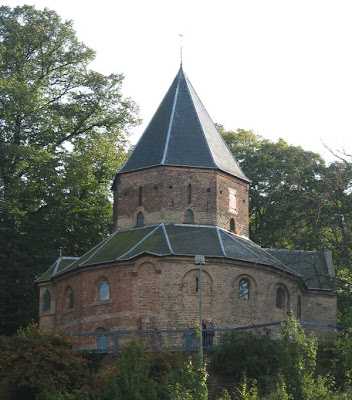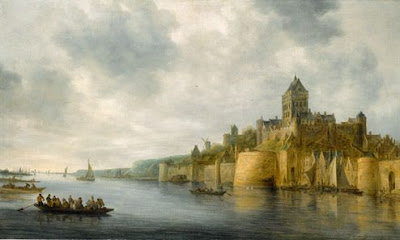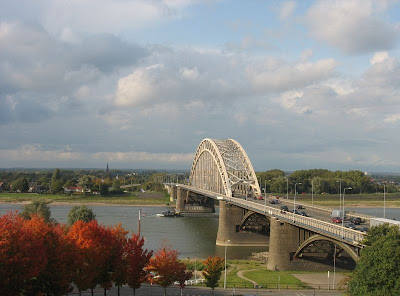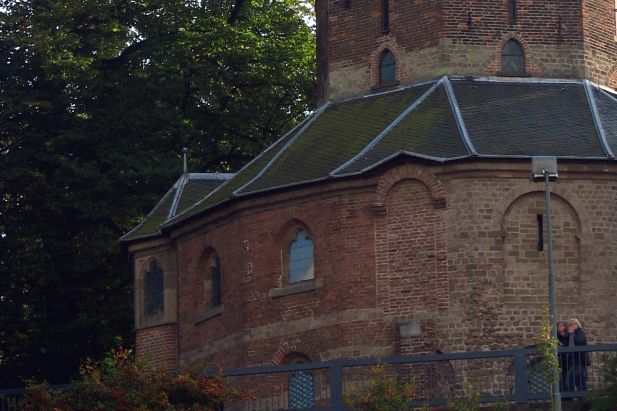



| |
Valkhof Nijmegen     |  |  |
Holland Short Information Sheet:
|
|
Holland Information Cloud:
|
|
|
While the Byzantine or Eastern empire flourished, with Constantinople as its centre, and Greek as the official language, order was kept among the nations of western Europe by Charlemagne. This restorer of the Roman empire was so named among the Franks, but in Nederland he was called Karel de Groote. In English he is known as Charles the Great.
He was the son of Pepin the Short, the grandson of Charles Martel, and the dynasty to which he belonged is known in history as the Caiiovingian. When the Roman empire broke up into the fragments which afterwards became the states of modern Europe, the title of Caesar also suffered change. As Latin ceased to be spoken and became a dead language, the modern languages grew into form. They may be grouped into the three families, Romance, Germanic, and Slavic.
In the southern countries the title of the emperor was pronounced with a soft c or s sound; in northern Europe with a hard or k sound; in Russia with emphasis on the last syllable. Whether Caesar, Keizer or Tsar, Karel was known all over Europe, after his coronation as emperor in St. Peter's church in Rome on Christmas Day, in the year 800. He was then fifty-eight years old. Most of Karel's life was spent in war. He pounded the Saxons as his grandfather Charles the Hammer had beaten flat the Saracens. Seventeen out of thirty-five of his campaigns were against the Saxons or Frisians, and other Germanic tribes that made common cause with these yellow-haired and long-knived warriors.
As conqueror, he compelled them to be baptized and accept Christianity. Driven into the rivers at the point of the spear, they agreed to renounce their paganism and hostility. Keizer Karel was not only a mighty warrior, but also a great civilizer. Pie established churches, schools, and monasteries throughout his empire. Alcuin, the most learned man of his age, was his superintendent of education. Most of the old schools in France owe their existence to Alcuin, as well as several of those in Nederland.

The Valkhof Chapel (original name: Saint Nicolaas Chapel), a chapel built around the year 1030 on the Valkhof.
Though Karel had many palaces in various parts of his realm, his favorite residence was at Nijmegen. Here, on the splendid plateau overlooking the Waal River, and on the site of the old Roman castle, he built the Valkhof. Some scanty ruins of this imperial residence still remain. They once formed part of the choir of the palace church. The tourist who rambles through the public park in Nijmegen, one of the few Dutch towns which require the visitor to climb a hill, can still see these and the landscape as of yore. Here great Charles loved to rest after his wars and administer the affairs of his vast empire, which extended from the Elbe and Eider rivers in the north, to the Tiber and Ebro in the south of Europe.

View on the Waal and Valkhof by Jan van Goyen, 1641. Collection of the Valkhof Museum of Nijmegen.
Gathering judges, poets, scholars, and singers around him, he enjoyed his home during the winters, for in the summer he put on the helmet and took the field. For beauty of scenery he could hardly have chosen a lovelier spot. Th prospect embraces fertile fields, rich pastures, azure hills, the old home of the Batavians, the Waal, Rhine, Maas and Yssel rivers, the fields of Brabant and the scene of the legend of the Knight of the Swan celebrated in Lohengrin. No other city excels Nymegen in its richness of memories of the great Frank. The curfew or old couvre-feu, or fire-bell, which nightly rings at 8.30 P. M. is called Keizer Karel's Klok, or clock, for a clock was a bell before it was a measurer of time.
Under Karel de Groote, the northern and the southern Netherlands were again united under one crown. They remained so for nearly eight centuries. From the year 785, when the Frisians were fully subjugated, along with the Saxons, they were more or less tributary to foreign rulers. These included Frankish, Burgundian, Austrian, or Spanish monarchs, until the rise of the Dutch republic; then they cast them off and became their own masters. Yet the men of Friesland remained "free Frisians," for they retained their own soil as their own property, and were governed according to their own laws.

View from the Valkhof: River Waal and Waal Bridge.
| |
|















